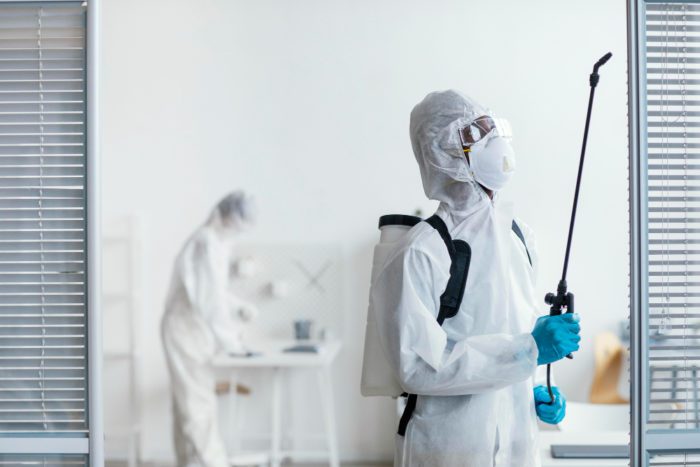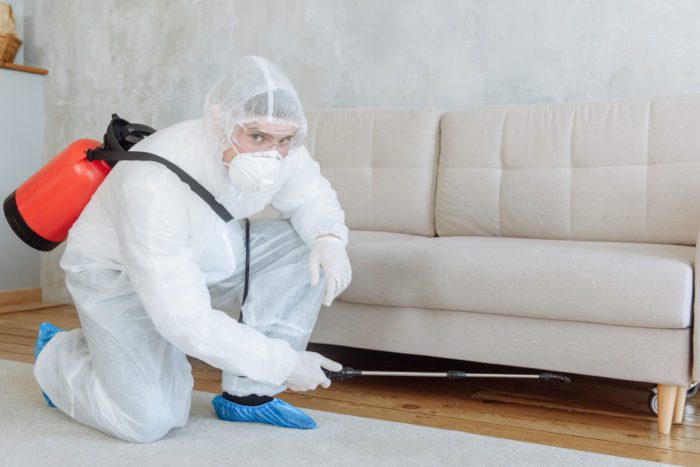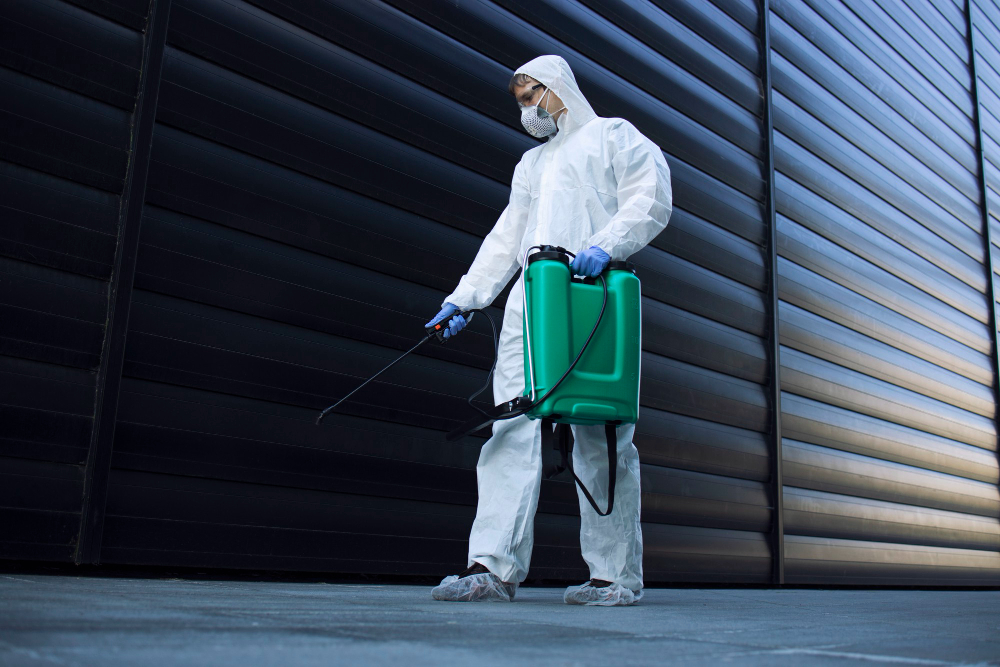Finding termite infestations is just like finding a needle in a haystack. Termites may develop several colonies in your house, the infestation could be anywhere. Reaching every point through spot treatments will not be an easy task. It will require a lot of effort, time and money.
Treating termites with fumigation is very effective as in this method the entire house is treated with the aim of complete elimination of termites from the structure.
This article will help you understand the working of fumigation, its effectiveness, cost and the preparations that must be done before the start of the process.
Important Note: If you're tired of pests and want a reliable solution, then you should definitely consider seeking help from a professional pest control company. DIY solutions can be effective, but if you're dealing with a significant pest infestation, you don't want to rely solely on DIY methods. Pest control companies typically don't charge huge fees. You can fill out this form to receive free quotes from the top local pest control companies, and compare the quotes and see for yourself. Then, finally, your pest problems will be eliminated for good.
What is Fumigation?

Fumigation is a technique used by pest control teams to eliminate insects. This method involves the release of a fumigant gas to an enclosed area for suffocating the pests present within that area. Oxygen or helium are some gases that can be used as fumigants.
Fumigation helps eliminate the infestations that are deep within and can’t be reached. This method is mostly used for drywood termites as they hide in areas that can’t be accessed easily. This includes under floorboards, in the furniture, beams, or walls.
This method is used for controlling pests in buildings, soil, grain, and even preventing the transfer of organisms during import-export.
To ensure the containment of a fumigant gas inside the structure, a tent is used to cover the whole structure until the process is completed. The infestation is usually present throughout the structure so it is recommended to fumigate the whole structure.
How to Prepare for Fumigation?

- Look out for temporary accommodations as you will not be allowed to enter your house during the process. Since the whole place will be contained with a fumigant gas, some extra time may be required for the neutralization process.
- Take all your pets and plants along with you as fumigants can be toxic to them.
- All the opened food items, including medicines, pet foods, dental care should be removed. All the jars and bottles should be sealed. Refrigerated or frozen items should be packed with double bags. All the items that are left behind should be contained properly.
- To make sure the fumigant gas reaches all parts of the house, open all the doors of the rooms along with the drawers and windows. Expose the exterior foundation by removing mulch and plants from your yard.
- Electrical appliances and heat sources should be unplugged and turned off respectively. The reaction between the fumigant materials and the heat sources can lead to a dangerous gas buildup inside the structure. To prevent this, suspend the gas services.
What Happens in Fumigation?

It usually takes 3-4 days for the completion of the process. A typical fumigation process generally looks like this:
- Step 1
Fumigation begins with the internal preparation i.e. the removal of food products, plants, pets, medicine, and electrical appliances. To increase the reach of the fumigant gas, the opening of drawers and gates is done. Warning agents are placed at specific locations.
After this, the team covers the entire structure with tents. They are sealed with the help of special types of equipment. The exterior preparations involve the placement of warning signs and blocking all entries.
Fumigant gas is released once the interior and exterior preparations are completed. The structure is contained with the gas for a specific period.
- Step 2
The aeration process begins with the help of the ventilation system. This system is opened by the team after making sure the fumigant gas is properly exposed to the whole structure.
- Step 3
After the completion of the aeration, the team removes the tent from the structure. Air samples are taken for checking the presence of the fumigant gas. This is done with the help of specially designed devices.
Once the air is neutralized, the re-entry signs are placed outside the structure. The team sometimes gives a specific time and date for the re-entry based on their examinations.
How Effective is it?
It is an effective treatment for the elimination of termites and their colonies. But this is not a preventive measure. This technique doesn’t give protection from future infestations.
Drywood termites can enter your house again as there are many entry points available for them. Regular inspection and sealing of all the cracks and holes should be done to prevent future infestations.
Safety And Cost

This operation demands expertise so the team should be certified. Post fumigation operations are very important. The ventilation of the entire structure and measuring the air quality are important safety aspects.
The choice of fumigant gas concerning the structure and infestation is very vital. After fumigation, wait for the air to get neutralized, as entering is only safe after the ventilation process.
The cost depends upon various factors such as the size of the house, infestations, and team quality. The larger the house, the more will be the tenting required. The amount of fumigant gas to be released also depends upon the size of the infestation and structure.
The fumigation technique is a very effective way to eliminate termites, so the costs can be high. Also, choosing a well-experienced team to ensure safety can increase the cost of the treatment.
Conclusion
The fumigation technique requires the involvement of both parties. The homeowner’s part is to make sure that the interior and exterior preparations are done perfectly with the help of the pest control team.
It is also advised to discuss with the team their expertise and license. The fumigant gas to be released should be suitable for the surroundings of the house.
This termite treatment requires a lot of precautions so it is better to stay vigilant throughout the process.
The job is not done even after the completion as fumigation doesn’t protect our house from future infestations. Regular inspections and the implementation of precautionary measures are a must.

